Despite being Croatia’s oldest, biggest and most visited national park, the Plitvice Lakes National Park keeps many important nooks out of sight. In this blog, find out some of the most interesting facts about the Park’s hidden gems.
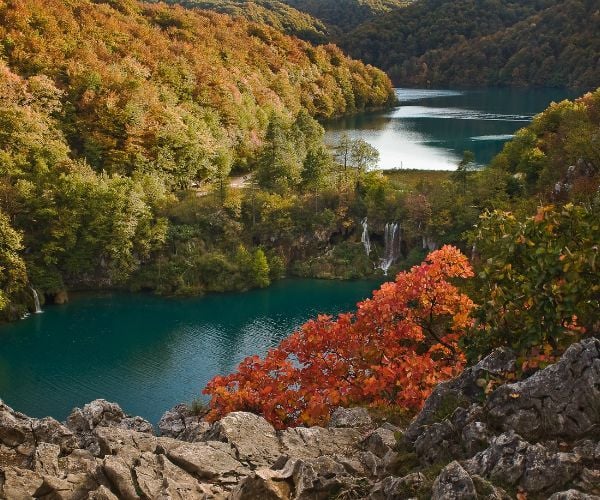
Rowing through paradise: Boat ride on the Plitvice Lakes
The Plitvice Lakes National Park is renowned for its beautiful pathways and wooden bridges. However, in recent years, more and more visitors want to experience something different – such as rowing on the Kozjak Lake and exploring the natural beauty of the Plitvice Lakes in a different way. An incredible experience awaits at this magical lake – its tranquil surface, surrounded by lush vegetation and monumental waterfalls, makes for a picturesque backdrop that leaves everyone astonished. Fun fact: in the past, rowing was allowed on other lakes as well. In order to preserve the ecosystem and maintain its natural balance, though, rowing is now limited only to the Kozjak Lake.
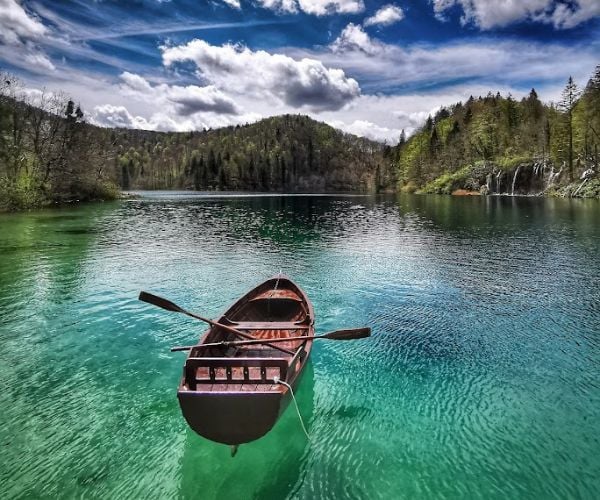
Rowing at the Plitvice Lakes makes for a more intimate experience of nature and unveils a different perspective of the Park. You will find plenty of peace and quiet at the Kozjak Lake – an ideal opportunity to fully bask in the serenity of nature. Look out for nature’s melodies and observe wild animals as they pop up on the lake’s shores. On this incredible adventure, you will get to meet curious ducks and marvel at schools of fish swimming in the crystal-clear waters. Regardless of whether you’re a nature lover, an adventurer or simply want to relish the beauty of your surroundings, rowing at the Kozjak Lake will leave you breathless. Choose your pace, savour every moment and make unforgettable lifelong memories.
Wonders of the wild: Discovering the fauna of the Plitvice Lakes National Park
The Plitvice Lakes National Park is home to an abundant and diverse world of flora and fauna. In fact, the wildlife and the extraordinary forest, lake and meadow biome are what make this place so unique. The Park is home to over 168 different species of birds, including common buzzards, wonderful Ural owls and spellbinding tawny owls. Strolling down the pathways, you may come across various species of frogs, salamanders and stone crayfish. The environment is also brimming with snakes and lizards, but their propensity for hiding makes them harder to spot. Horvath’s rock lizard is another noteworthy species you may encounter at the Park. Most of these species are endangered or strictly protected. More than 50 different species of mammals have been recorded in the Park, and the abundance of bats is attracting a lot of attention. Within the fascinating range of colours on butterflies, the swamp blue species stand out the most.
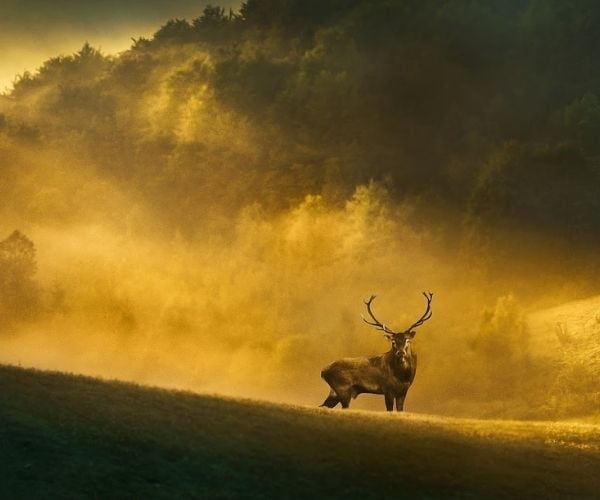
In the diverse world of insects, which plays a key role in connecting land and water ecosystems, the Plitvice Lakes is home to one endemic species and subspecies. The abundance of vertebrae is what makes this region special. Lakes and tributaries make up an important landscape, in which the brown trout, the true gem of these waters, really stands out. The forests of Plitvice Lakes provide habitat for many wild animals, such as strictly protected and endangered species: the brown bear, wolf, lynx and otter. Stags and does often wander the forest areas and can sometimes be spotted in open meadows.
Beyond the waterfalls: The footpaths and hidden gems of Plitvice
Moving through the National Park is made easier with diverse lake sightseeing programmes, which don’t only reveal the most visited spots, but also the less explored ones that are just as spectacular. The “K programme”, which takes the longest route through the Park, offers an unforgettable experience of walking past waterfalls, through a thick forest and uphill to concealed lookouts. This track also provides an opportunity for quiet moments of reflection while breathing in the fresh forest air and exploring the winding paths that reveal the natural beauty of the Park.
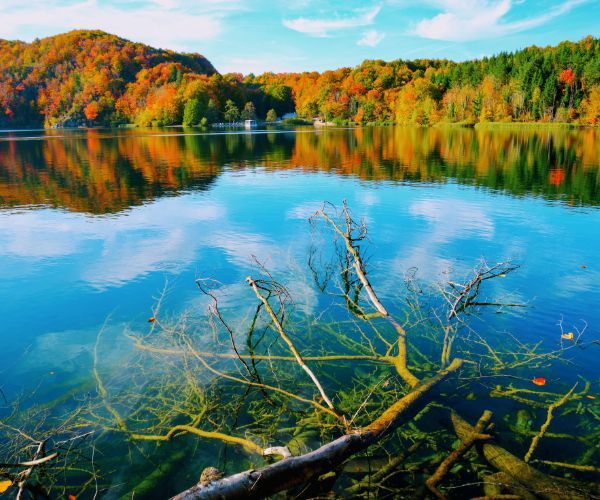
As you’re moving through less frequented pathways, you will discover a deep sense of calm and the realisation that the magic of the Plitvice Lakes National Park does not lie solely in its famous waterfalls and lakes. The true gems are hiding in the stillness of its nooks, where the pristine nature shines. The pathway leading to the Kozjak Lake will take you to secluded coves illuminated by streaks of light breaking through the thick greenery.
Gazing upon the surrounding landscape reflected in the lake’s tranquil water, you will feel like you’ve stepped into a fairytale wonderland. Take a break to capture these unique sights on camera and enjoy moments of silence offered by the less trodden parts of the National Park. Anyone who takes these pathways will be rewarded with a one-on-one meeting with nature and all its hidden wonders.
Beneath the surface: Discovering the cave system
The area of the Plitvice Lakes is formed from carbonate rocks (mainly limestone and dolomite) from the Mesozoic Era, which created the lavish karst formations with surface and underground relief features. As you’re strolling down the paths next to crystal-clear lakes, you may notice some of these features, but many remain hidden and unexplored underground. Around 100 speleological objects have been explored in the Park so far – the longest cave being Golubnjača in the Korana canyon, spanning 165 metres, and the deepest one being the Čudinka cave, reaching 203 metres in depth.
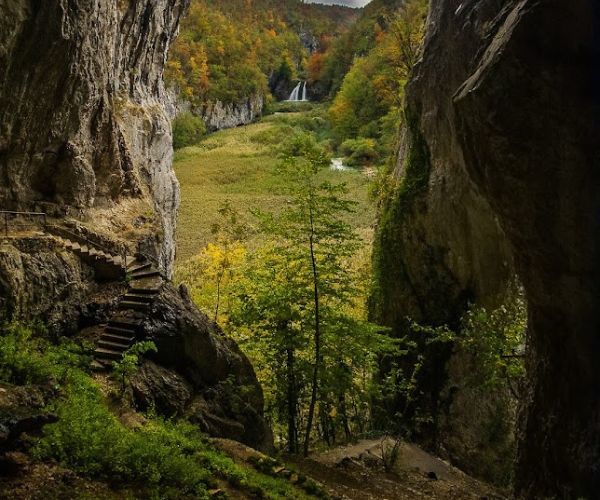
Three caves in the Lower Lakes canyon and the Korana river – Šupljara, Black Cave (Vila Jezerkinje Cave) and Golubnjača – have been declared geomorphological monuments of nature, which bears testimony to their critical importance. Inside the National Park, tucked away from curious onlookers, invaluable treasure is hiding – a cave garden. The cave garden is a very rare karst formation that can appear beneath cascades and waterfalls during an intense tufa barrier formation process. It can be found under the Labudovac barrier and its age is estimated at 300–1,600 years. Speleological objects in the National Park are extremely important for nature protection since they provide habitat to many rare and protected species and are also filled with cave decorations that have been forming for millennia. The Plitvice Lakes National Park never ceases to enchant with its exceptional beauty, and the lavishness of the cave world is just one of the many reasons why this area is so special. The National Park’s caves cannot be visited because they are highly protected, but you can see them from up close and marvel at their monumentality.
Through its wild fauna, grand cave world, footpaths and lakes, the Plitvice Lakes National Park serves as a reminder of the importance of preserving these unique ecosystems and nature.
Did you enjoy this article?
Receive similar content direct to your inbox.
Please enable JavaScript in your browser to submit the form

